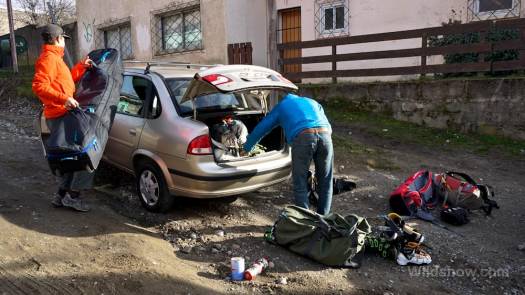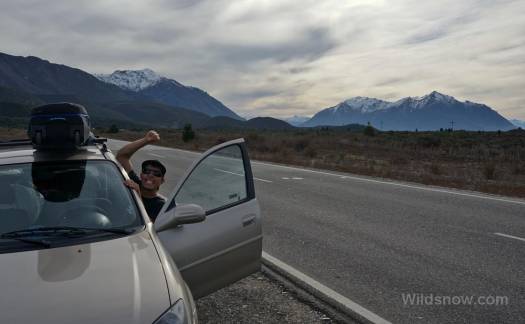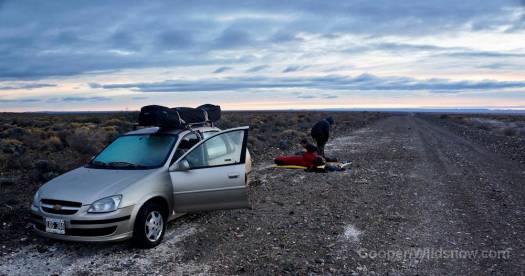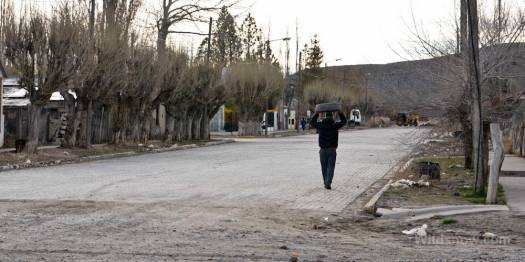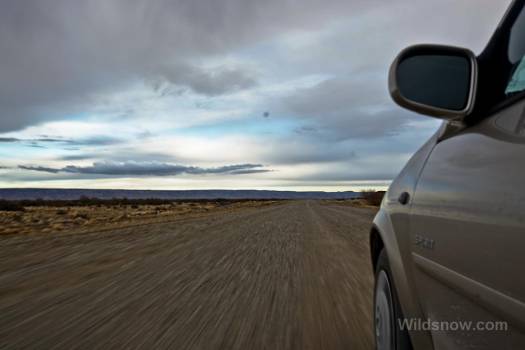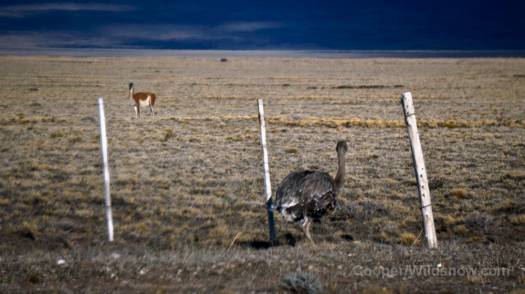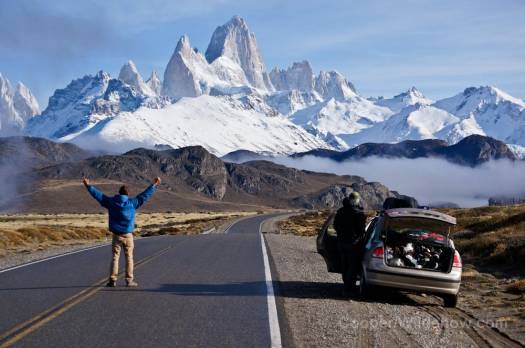After skiing wind-hammered and wind-slabby conditions around Bariloche, we decided to head south, toward “real Patagonia,” the land of megalithic granite spires and expansive ice fields.
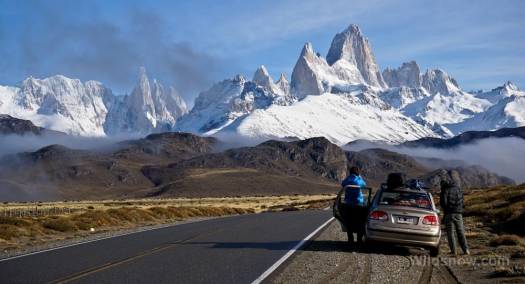
Our first view of what I have always thought of as Patagonia. Fitz Roy is the towering piece of granite straight ahead.
The weather forecast for El Chalten was clear and sunny, with almost no wind, and we heard of powder skiing from a few locals. With nothing left to decide, we found the cheapest rental car in Bariloche and geared up to head south. The road from Bariloche to El Chalten follows the infamous Ruta 40, a long, dusty, partially unpaved highway through the Pampas (Argentinian plains). The highway stretches through sparsely populated Patagonia all the way to Ushuaia on the southern tip of South America.
Ruta 40 is analogous to the Alaska Highway through Canada, especially before some sections were paved. We planned to make the journey in our rented Chevy Corsa, with ski bag and gas can strapped to the roof. In a far under-equipped rig for the journey, but with stubbornness, or more likely naivety, we were determined to make it work.
We started down the highway, soon left the mountains around Bariloche, and entered the purgatory of the endless pampas. Driving the dusty Argentinian plains was like nothing I’ve ever experienced. Hours upon hours of unmarked roads with no signs or posts, 360 degrees of grass, bushes, and the occasional wild lama dotting the landscape. Even other cars were a rare sight. We only passed another traveler perhaps every half hour or so. With only an out-dated paper map and g\Google maps downloaded on Skyler’s phone (equally outdated) we were in constant worry of getting lost and running out of gas.
Ruta 40 isn’t a constant or well-defined route, and simply follows the best roads south. Whenever road crews pave a nearby section of road, they switch the “Ruta 40” over to that section, often without even adding a sign. We nearly got stymied by this a few times, but were able to stay on the right track by following the policy of “always follow the paved road, even if it goes in the completely wrong direction.”
After one long section of un-paved road, we stopped in the tiny town of Rio Mayo for gas. After we were done, and about to get back on the road, we noticed one of our back tires was completely flat. We pulled the tire off, and inspected the damage. A sizable portion was missing the tread and worn all the way down to the radial wire. In Bariloche, the rental company had proudly pointed out the brand-new snow tires on the front of the car. However, they failed to mention, and we failed to notice, the worn-out rear tires.
Both rear tires were worn well past their usable life, almost totally bald. Knowing the tire was shot, and not wanting to continue driving dirt roads with only our spare, we began searching for a new tire. None of the tiny gomerias (tire repair shops) in town had a tire our size, so we decided to drive on to the next town. We had our fingers crossed the entire pothole filled drive, hoping our equally-bald spare wouldn’t blow out, leaving us completely stranded.
In the next town, Perito Moreno, we made a tour of all the local gomerias (a sizable portion of the businesses in this tiny town). Finally we found a tire that fit. The owner pulled it out of a pile of trashed tires. It was easy to see that it was ready for the dumpster. However better than nothing, so we bought it for $20 and headed on our way.
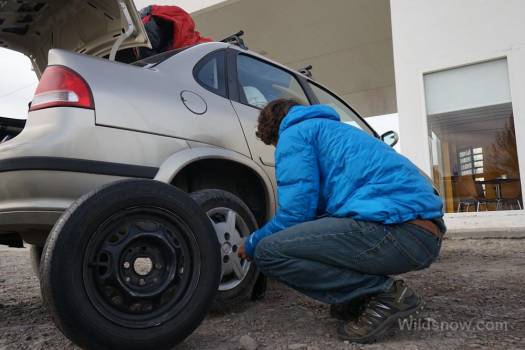
Investigating the damage. Luckily we got the flat while we were in the small town of Rio Mayo, and not hours away on the side of the road.
After 2.5 days of driving (our time was extended significantly by our search for a new tire), the terrain began to change. The flat pampas turned into rolling hills, and in the distance some larger hills had a dusting of snow. Soon we entered a cloud bank, and saw a sign announcing Parque de los Glaciares, the national park that holds Cerro Torre and Fitz Roy.
A few kilometers further, we broke through the clouds, and were greeted with one of the most incredible views I have ever seen. Fitz Roy and the surrounding mountains rose over the plains, towering above us. We had exited purgatory and entered heaven.
Louie Dawson earned his Bachelor Degree in Industrial Design from Western Washington University in 2014. When he’s not skiing Mount Baker or somewhere equally as snowy, he’s thinking about new products to make ski mountaineering more fun and safe.

